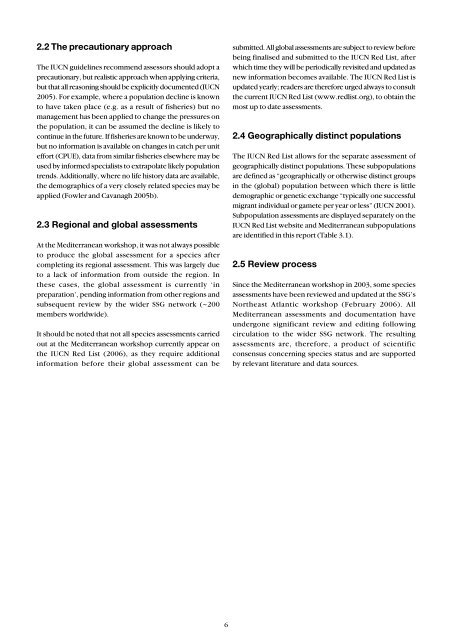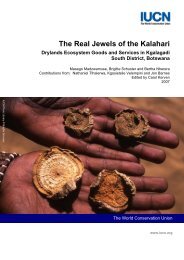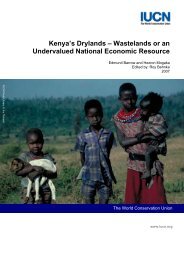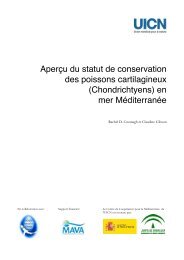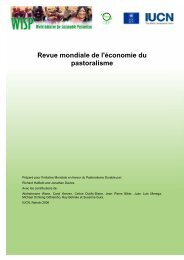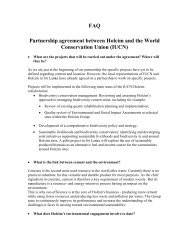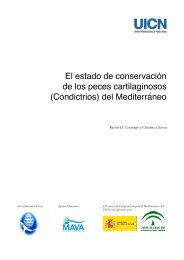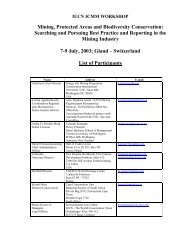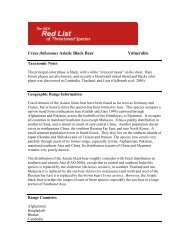iucn mediterranean sharks (pdf) - The Shark Trust
iucn mediterranean sharks (pdf) - The Shark Trust
iucn mediterranean sharks (pdf) - The Shark Trust
You also want an ePaper? Increase the reach of your titles
YUMPU automatically turns print PDFs into web optimized ePapers that Google loves.
2.2 <strong>The</strong> precautionary approach<strong>The</strong> IUCN guidelines recommend assessors should adopt aprecautionary, but realistic approach when applying criteria,but that all reasoning should be explicitly documented (IUCN2005). For example, where a population decline is knownto have taken place (e.g. as a result of fisheries) but nomanagement has been applied to change the pressures onthe population, it can be assumed the decline is likely tocontinue in the future. If fisheries are known to be underway,but no information is available on changes in catch per uniteffort (CPUE), data from similar fisheries elsewhere may beused by informed specialists to extrapolate likely populationtrends. Additionally, where no life history data are available,the demographics of a very closely related species may beapplied (Fowler and Cavanagh 2005b).2.3 Regional and global assessmentsAt the Mediterranean workshop, it was not always possibleto produce the global assessment for a species aftercompleting its regional assessment. This was largely dueto a lack of information from outside the region. Inthese cases, the global assessment is currently ‘inpreparation’, pending information from other regions andsubsequent review by the wider SSG network (~200members worldwide).It should be noted that not all species assessments carriedout at the Mediterranean workshop currently appear onthe IUCN Red List (2006), as they require additionalinformation before their global assessment can besubmitted. All global assessments are subject to review beforebeing finalised and submitted to the IUCN Red List, afterwhich time they will be periodically revisited and updated asnew information becomes available. <strong>The</strong> IUCN Red List isupdated yearly; readers are therefore urged always to consultthe current IUCN Red List (www.redlist.org), to obtain themost up to date assessments.2.4 Geographically distinct populations<strong>The</strong> IUCN Red List allows for the separate assessment ofgeographically distinct populations. <strong>The</strong>se subpopulationsare defined as “geographically or otherwise distinct groupsin the (global) population between which there is littledemographic or genetic exchange “typically one successfulmigrant individual or gamete per year or less” (IUCN 2001).Subpopulation assessments are displayed separately on theIUCN Red List website and Mediterranean subpopulationsare identified in this report (Table 3.1).2.5 Review processSince the Mediterranean workshop in 2003, some speciesassessments have been reviewed and updated at the SSG’sNortheast Atlantic workshop (February 2006). AllMediterranean assessments and documentation haveundergone significant review and editing followingcirculation to the wider SSG network. <strong>The</strong> resultingassessments are, therefore, a product of scientificconsensus concerning species status and are supportedby relevant literature and data sources.6


